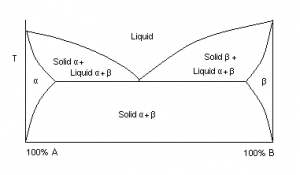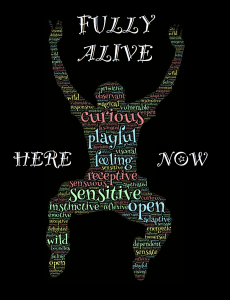
During November 2019, I was fortunate enough to observe two staff deliver teaching and learning support to large groups of students. The first, Dr. Mark Coleman from the College of Engineering teaches over 150 students in his classes and Dr. Sian Rees from the College of Arts and Humanities was teaching a group of approximately 70 Postgraduate taught students.
I was able to do this through our Open Door Programme https://salt.swan.ac.uk/open-door/ . I’d been trying to observe a teacher of large groups since this isn’t something that I’ve experienced and felt it was something I had to witness for myself, although I’d seen tips from the HEA: Large Group Teaching Tips
Both Mark and Sian have won student-nominated ELTAs and have been supporting SALT in delivering guidance on teaching through our PGCert and also engagement in TEL Talks (Mark for example shared how he uses Slido in a TEL Talk in May 2019: (Using Slido and other audience engagement tools – copy and open the link in Chrome/Firefox to view and listen)
The Open Door Programme gives a very loose framework for your observation which I’ve included in this post.

The context of the sessions
Mark’s class was a repeat of a session delivered to first year engineers, which come from diverse cultural and discipline backgrounds (the entire cohort being approx 500 students). Its delivered in a tiered lecture theatre with whiteboards, 3 screens and an estimated 180 person capacity. The 2 hour session was lecture 15 on eutectics – see picture above and link following (https://www.sciencedirect.com/topics/engineering/eutectics).

Sian was examining PR and branding to her masters levels students in a flat floor, fixed row seats in Faraday Towards the back was a ‘platform’ and movement for the teacher was limited to one aisle at the side of the room.
What did I observe?

I observed confident educators, clearly engaging and having a good rapport with students and able to be physically engaging by moving throughout the room, despite perhaps apparent barriers – fixed rows and stairs for example.
Mark uses Slido ( https://www.sli.do/) to check student understanding and also as a means of enabling students to ask questions while he’s teaching – perfect for dealing with large class sizes but also addresses issues of inclusivity for those students who wish to remain anonymous/are a bit shy to ask a question (K4, V1).
(There are other technologies to achieve similar goals – see SALT’s webpages: https://salt.swan.ac.uk/polling-solutions-aka-clickers/ . There is considerable research about the use of such tools for engagement and addressing inclusivity issues, even that it promote learning by making it fun (see Chan, Wan and Ko, 2019) – something that came across in Mark’s class as there’s a competition attached to it!)
Sian asks her students to actively work in pairs (Turn (or think), Pair, Share from the HEA’s Tips) and regularly sets questions for them to discuss and answer and while they are discussing, she will ‘roam the room’ facilitating their learning, encouraging answers from all the students present. There are several examples of active learning techniques being used by Sian which are appropriate to her student characteristics (K2, K3).
Both teachers use approaches to engagement that are appropriate for their group, and bring in their own research into the session (K1). One of the best things from the Open Door programme was the ability to have a great discussion with both about their rationale for different approaches to teaching, design of the class and support for learning. To ‘Talk Teaching’ was inspiring.
What is useful to remember is that you aren’t necessarily specialists in the subject of what these colleagues are teaching – engineering and public relations in these cases. I did learn stuff from them, from Mark I learnt about the different properties and proportions of alloys and how that affects its combined qualities and from Sian in fact how to approach a marketing campaign and your image, regardless of your product.
The Open Door programme asks the question:
Did I see what I wanted to see?
Yes! I also had an invaluable opportunity to explore all kinds of follow-up questions with both and I’d like to think that the discussion enriched our practices from both sides. That is why the Open Door Programme provides a fabulous opportunity to continuing to advance your practice (“do CPD”) and facilitates a key aspect of learning from others (King, 2019). As an HEA Fellow (at all categories), its really important to Remain in Good Standing and therefore to

Never Stop Learning
Louise Rees, Senior Academic Developer (HEA), SALT (Twitter: @LJ_Rees, #SUSALTHEA)
 Further Reading
Further Reading
Chan, S.C.H.; J.C.L. Wan and S. Ko (2019) ‘Interactivity, active collaborative learning, and learning performance: The moderating role of perceived fun by using personal response systems’, in The International Journal of Management Education, Vol 17 (1) 94-102 DOI: https://doi.org/10.1016/j.ijme.2018.12.004
Implement Active Learning Strategies, https://serc.carleton.edu/introgeo/gallerywalk/active.html, Accessed December 19 2019
Ellis, R. (2019) Active Learning in HE blogpost. https://salt.swan.ac.uk/getting-active/ Accessed December 19 2019.
Higher Education Academy (2015) “Large Group Teaching Tips” Higher Education Academy, York. https://www.advance-he.ac.uk/knowledge-hub/large-group-teaching-tips
King H. (2019) ‘Continuing Professional Development: What do award-winning academics do?’ Education Developments, Issue 20.2, Staff and Educational Development Association (SEDA)
Ko, L.N., Rana J. and S. Burgin (2017) ‘Teaching & Learning Tips 5: Making lectures more “active”‘, International Journal of Dermatology, Vol. 57 (3), 351-354. DOI: https://doi.org/10.1111/ijd.13701
Papadopoulos P.M., Natsis, A, Obwegeser N. and A. Weinberger (2018) ‘Enriching feedback in audience response systems: Analysis and implications of objective and subjective metrics on students’ performance and attitudes’, in Journal of Computer Assisted Learning, Vol. 35 (2), 305-316. DOI: https://doi.org/10.1111/jcal.12332
SALT website: https://salt.swan.ac.uk/polling-solutions-aka-clickers/


